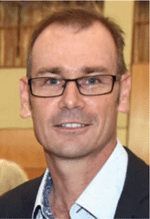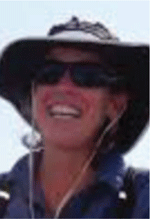Darwin Harbour – a partnership approach to understanding and evaluating environmental challenges
Richard Brinkman A D , Edward Butler B , Terry O’Connor C and Claire Streten BA Australian Institute of Marine Science, PMB 3, Townsville MC, Qld 4810, Australia.
B Australian Institute of Marine Science, Arafura Timor Research Facility, Brinkin, NT 0810, Australia.
C Darwin Port, PO Box 390, Darwin, NT 0801, Australia
D Corresponding author. Email: r.brinkman@aims.gov.au
The APPEA Journal 59(2) 523-525 https://doi.org/10.1071/AJ18137
Accepted: 29 March 2019 Published: 17 June 2019
Abstract
Darwin Port plays a critical role in the Northern Territory’s export-oriented economy and in supporting the economy of northern Australia more generally. Darwin Port is the only true multi-modal port in northern Australia, with direct connectivity to southern Australia and beyond via the southern rail link. The port has developed rapidly over the past decades, with redevelopment of the Waterfront Precinct, development of numerous residential marinas, construction of the East Arm Wharf and marine supply base, and construction and operation of liquefied gas processing and export facilities. Future development plans include Middle Arm Industrial Precinct and Marine Industry Park. These developments have resulted in an order of magnitude increase in dredging requirements, an increase in vessel traffic and an increase in public focus on environmental quality within the harbour. A coordinated, multi-agency approach to understand the complex marine environment of Darwin Harbour has underpinned much of the development activity and provided a sound scientific basis to evaluate potential environmental impacts associate with past and future developments. Through a hierarchical process of environmental assessment and identification and mitigation potential risks, the Australian Institute of Marine Science has partnered with industry, government and other research providers to deliver projects to map and assess habitats, monitor environmental attributes and evaluate potential impacts, and provide environmental information in novel and accessible ways to support harbour operations and inform strategic planning. The partnership approach adopted for Darwin Harbour serves as a model for leveraging resources to understand and manage environmental and operational risks in northern ports.
Keywords: community engagement, data, environmental management, government-industry partnerships, information, report card.

Dr Richard Brinkman leads the Sustainable Coastal Ecosystems and Industries in Tropical Australia Research Program at the Australian Institute of Marine Science, Townsville, Australia. Richard is a physical oceanographer/numerical modeller with a background in applied environmental fluid dynamics and significant expertise in conducting observational and modelling based research on Australia’s tropical coasts and marginal seas. He has extensive experience in identifying research needs of stakeholders to deliver outcomes that benefit their operations, and has delivered projects for clients ranging from state and federal government agencies, natural resource management bodies, and a range of industries with coastal and marine interests. Richard’s research interests fall within the broad topic of coastal oceanography with a focus on coupling shelf and ocean circulation, sediment dynamics on tropical coasts and physical–biological interactions at regional and local scales. His emphasis is always on delivering scientific outputs that are accessible, usable and impactful to end users. |

Dr Edward Butler is a principle research scientist at the Arafura Timor Research Facility of the Australian Institute of Marine Science, and Director of the North Australia Marine Research Alliance. He was most recently the AIMS–NT Science Leader. He completed his undergraduate training in marine science and biochemistry at the University of Melbourne and went on there to do a PhD on iodine cycling in the oceans. His research interests cover environmental chemistry and chemical oceanography, with applications to oceanic studies from Antarctica to equatorial waters. He has also led diverse investigations of Australian estuarine and coastal systems, with often a focus on industries operating compatibly and sustainably in these environments, and recently framing interdisciplinary science to support multiple-use management of these waterways in northern Australia. |

Terry O’Connor joined Darwin Port Corporation in June 2008 as General Manager Landside Operations, following a long career in the Royal Australian Navy. He has held positions within the Federal Government as a maritime specialist and with the private sector in logistics management. Terry was appointed as CEO of the Darwin Port in August 2011. |

Dr Claire Streten is the NT Science Leader for the Australian Institute of Marine Science, Arafura Timor Research Facility. Claire was awarded her PhD in 2005 by Charles Darwin University. Her research investigates the relationship between microbial communities and metal concentrations in sediment and the water column. In her current role, Claire leads the implementation of AIMS’ research portfolio for the Northern Territory, and contributes to AIMS’ vision for Northern Australia. |


